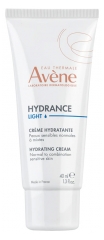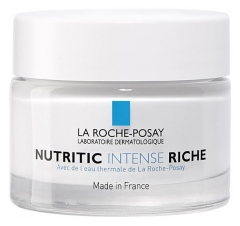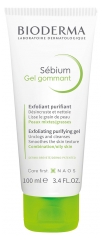Improve your skincare by identifying your skin type
Written by Marion, Aesthetician/Cosmetician | published on | updated on 17/04/2024

One of the first things we notice about other people is their skin. Did you know that it is also a reliable indicator of your overall health because it reflects what is happening inside your body? For optimal skincare, you need to get to know your skin. The first step is to identify your skin type.
What are the different skin types?
There are four main skin types as follows.
Normal skin
Also known as well-balanced skin, the scientific term is eudermic. It is not afflicted by excess sebum production and does not have dry areas. Being neither too dry nor too greasy, normal skin has fine pores and a soft, smooth blemish-free texture. It enjoys effective circulation, giving it an even, slightly rosy colour.
Oily skin
Oily skin suffers from the excess production of sebum, known scientifically as seborrhoea. This may be caused by a genetic predisposition, stress, certain medication or hormonal changes, as well as by the use of inappropriate cosmetics. Oily skin can be distinguished by its dilated, very noticeable pores. Skin has a glossy shine and is thicker than average.
Dry skin
Dry skin produces less sebum than normal skin. Its lipid content is therefore insufficient and it does not have the necessary hydration to create a barrier to protect it from environmental damage. Dry skin is characterised by redness, a rough, spotty appearance and scaliness, as well as occasional cracking. People with dry skin may suffer from irritation and tightness.
Combination skin
As the name suggests, combination skin combines oily and dry skin. The area known as the T zone (forehead, nose and chin) is oily while the cheeks are dry. The T zone has dilated pores and is very shiny. It may have blackhead-type blemishes. The cheeks have the same redness and irritation characteristic of dry skin.
Did you know?
The skin is an organ; in fact, it is the largest and heaviest organ of the body. It weighs between 3 and 5 kilograms and can cover an area up to 2 m2, which is pretty impressive!
How can you determine your skin type?
What determines your skin type?
Skin is covered with a hydrolipidic film comprising sebum and sweat and it is the balance of the two which determines your skin type. To identify a person’s skin type, you therefore need to look at the appearance of the skin. For instance, oily skin tends to be shiny while dry skin may have visible redness.
Identifying your skin type:
When taking care of your skin, it is crucial to know your skin type. Knowing whether you have oily, dry, normal or combination skin will enable you to care for it and look after it properly.
There are several different ways to identify your skin type, one of which is a test that you can carry out at home:
The tissue paper test: cleanse and dry your face then wait 30 mins until your skin begins to produce sebum again naturally. Take two strips of tissue paper and place one along the length of the T zone and the other on one of your cheeks. Press the strips down for two minutes without rubbing and then look at them. Their appearance will help you to determine your skin type.
Determining the outcome:
For the tissue paper test:
- Normal skin: there will be slight traces of oil on each strip;
- Oily skin: there will be significant traces on each strip;
- Dry skin: there won’t be any oil on either strip;
- Combination skin: there will be significant traces on the T-zone strip but nothing from the cheeks.
If you’d rather call in the experts, you can visit your dermatologist or go to a specialist institute where skin diagnostics can be performed to determine your skin type with certainty.
Skin type and acne
Oily skin is the skin type most prone to developing acne. The reason is simple: acne is the result of excess sebum causing blackheads and spots, and people with greasy skin tend to secrete more sebum.
Skincare based on skin type
The needs and issues associated with different types of skin:
To appear beautiful and healthy, each type of skin has its own specific needs.
- Normal skin: while this is the ideal skin type, it is still important to take care of normal skin. Cleanse morning and night using a gentle cleanser such as Pureclear de Dermatherm. Choose products designed for normal skin to ensure that you respond to your skin’s specific needs.
- Oily skin: cleanse your skin morning and night with a gentle foaming gel such as Exfoliac de Noreva. Avoid harsh products that could irritate your skin and stimulate its production of sebum. Exfoliate your skin at least once a week in order to unclog your pores. Finally, oily skin also needs to be moisturised, but you should choose a product with a light texture. You could also use a weekly clay mask.
- Dry skin: use a moisturising cleanser morning and night which will nourish your skin and won’t dry it out. Apply an energising cream for dry skin morning and night, such as Idealia de Vichy and make the most of the night time by nourishing your skin with a rich cream. Complete your beauty regime by applying a moisturising mask once or twice a week.
- Combination skin: use a gentle product to cleanse your skin and remove make-up to avoid irritating the T zone or drying the cheek area. Choose lotions suitable for your entire face. Apply a mattifying rebalancing product such as Jowaé fluid in the morning to treat the T zone and a repairing product for combination skin at night. Use Clinique’s toning facial scrub and a moisturising mask two or three times a week.
The skin is an organ that needs treating with care. The first step is to identify your skin type to establish the most effective way to look after it.
Three key takeaways in relation to different skin types:
- There are four main skin types: normal, oily, dry and combination, and each one has its own characteristics and needs.
- The skin is made up of three layers. The deepest layer is known as the hypodermis. The majority of nerve endings are contained in the dermis. The epidermis is the part of the skin that we see, protecting us from environmental damage, and this is the layer that needs to be taken care of.
- Each skin type has very specific needs: effective treatments for oily skin may damage dry skin and vice versa. Correctly establishing your skin type is therefore a key step in caring for it properly.






















